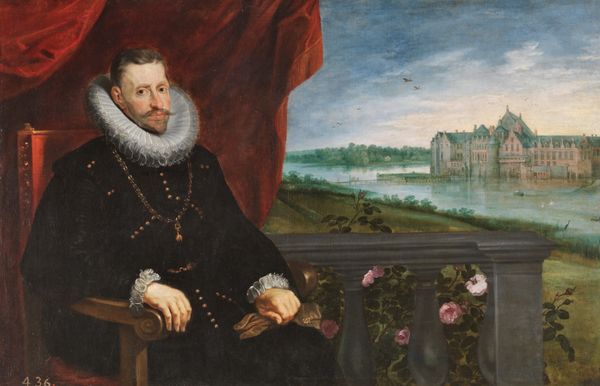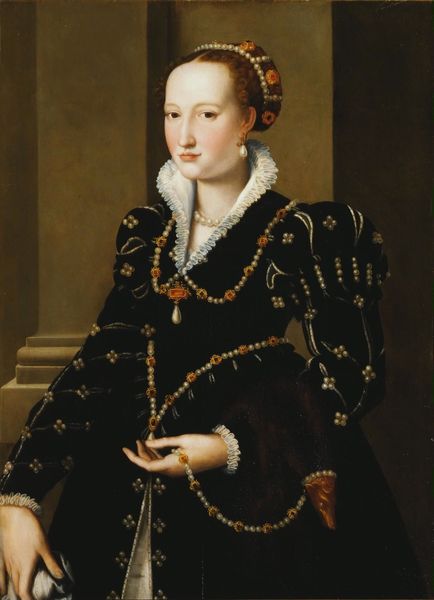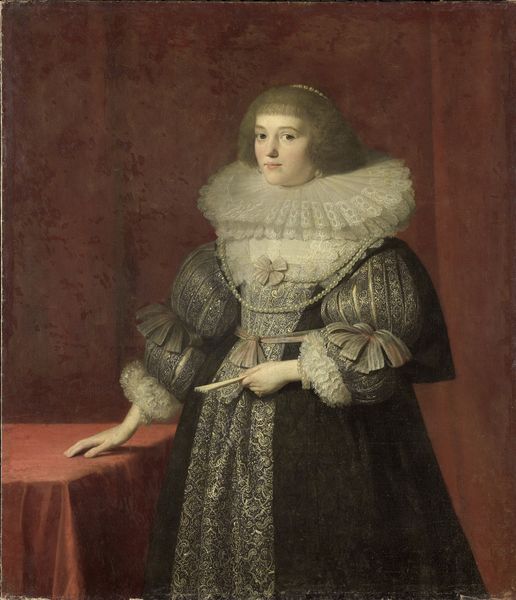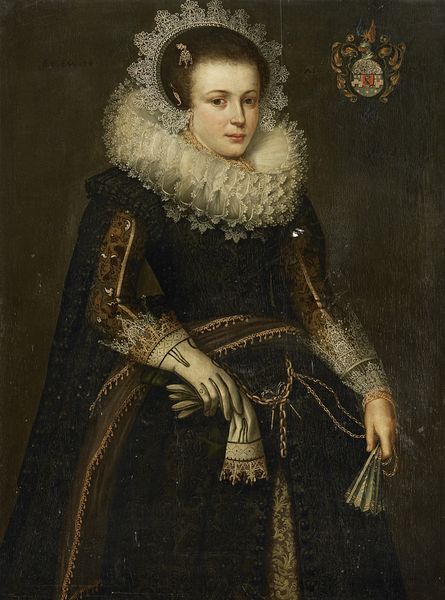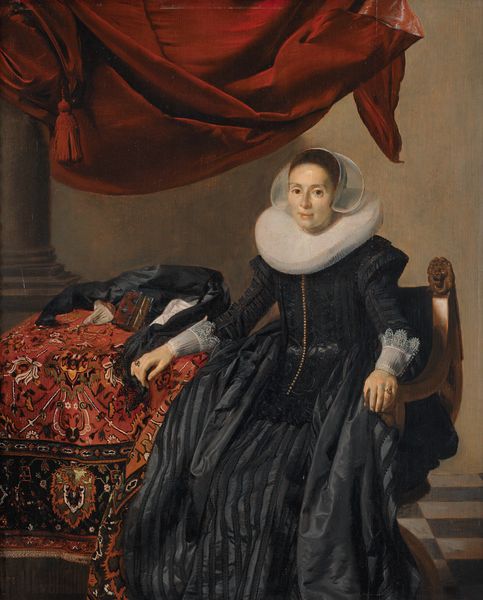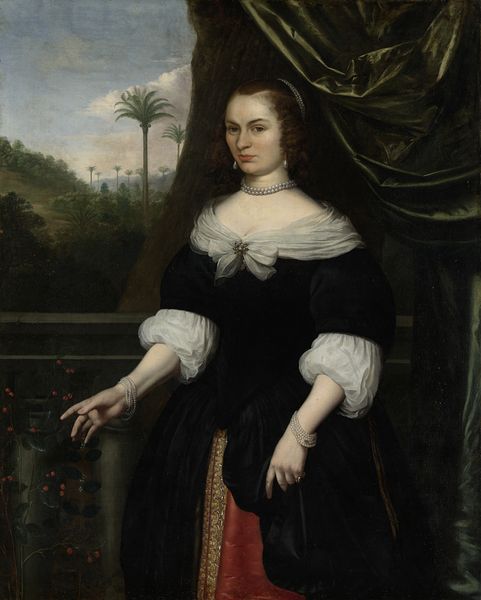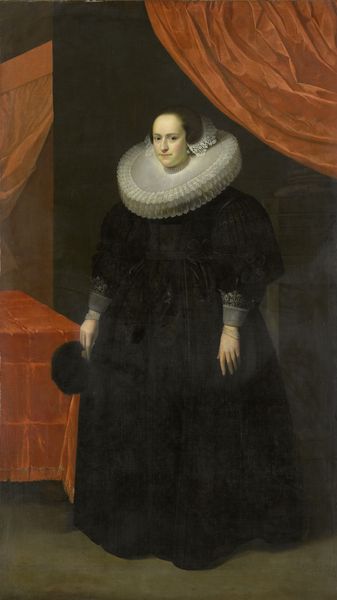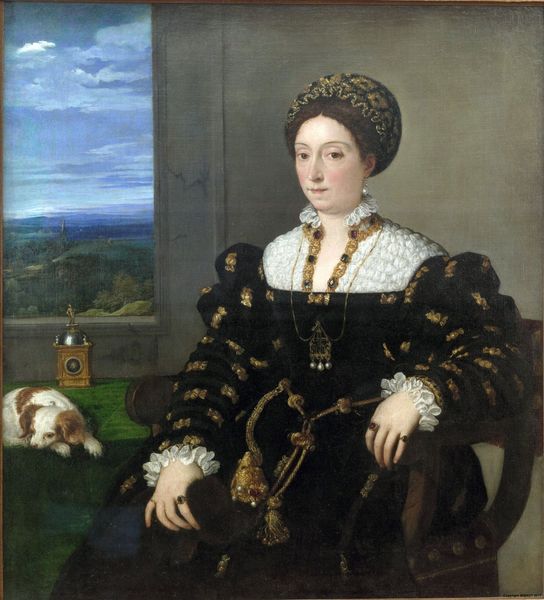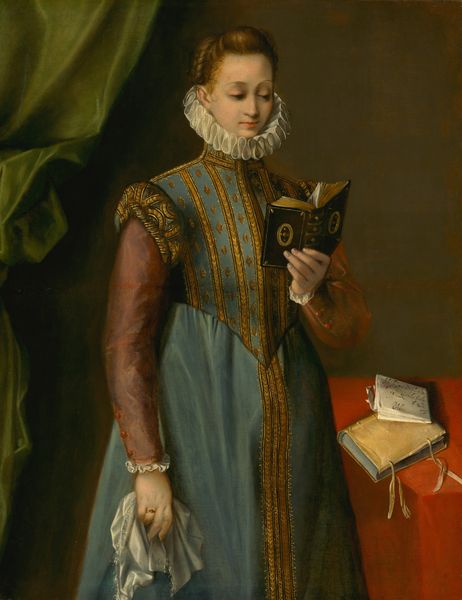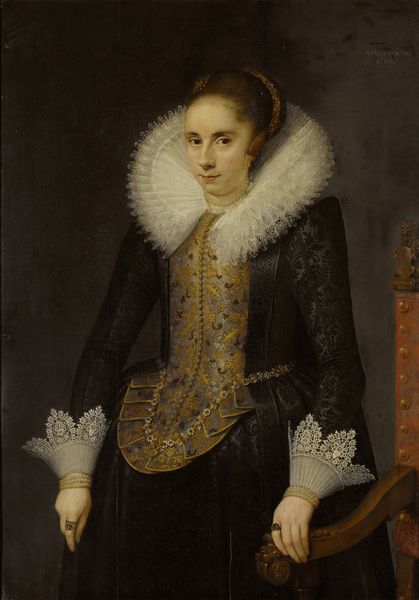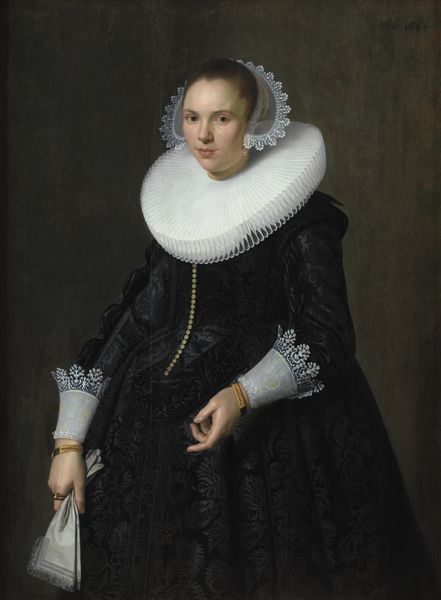
oil-paint
#
portrait
#
baroque
#
oil-paint
#
oil painting
#
history-painting
#
portrait art
Copyright: Public domain
Editor: Here we have Peter Paul Rubens’s oil on canvas portrait of "The Infanta Isabel Clara Eugenia" from 1615. It strikes me as a picture brimming with wealth and status, obviously, but I also get a real sense of how materials dictate status in the 17th century. What's your take? Curator: For me, it is about the intense labor embedded in creating and procuring each element: the production of the oil paints themselves, grinding the pigments; the weaving of her opulent gown; consider also the silkworms cultivated to make the thread for the pearls draped on her chest. These aren’t mere aesthetics but records of complex social and economic systems. What does that tell us about power structures at the time? Editor: That's fascinating. I hadn’t really thought about where each of those materials *came* from. So the very act of Rubens painting this is itself an economic activity? Curator: Absolutely. The commission itself is an economic exchange, with Rubens receiving payment for his skilled labor and materials. But more than that, the portrait broadcasts the Infanta’s family wealth and control over these material resources and the workforce used to acquire them. Notice how even the folds of the curtain create an illusionistic space meant for viewing. How much did the stage setting of aristocratic portraiture itself dictate production, and hence our understanding? Editor: So, in this reading, the painting isn't just *of* wealth; it's a direct manifestation of economic systems and social hierarchy. I guess you could analyze other paintings and sculptures through this lens too, identifying embedded cultural and historical records. Curator: Exactly! And thinking about who had access to such portraiture versus who was involved in their manufacture further highlights existing inequalities. This makes us re-evaluate standard art historical judgements, placing labour at the forefront. Editor: This really changes how I'll look at these older portraits. Thanks! Curator: Indeed! Focusing on the material conditions truly unlocks a deeper historical understanding.
Comments
No comments
Be the first to comment and join the conversation on the ultimate creative platform.
